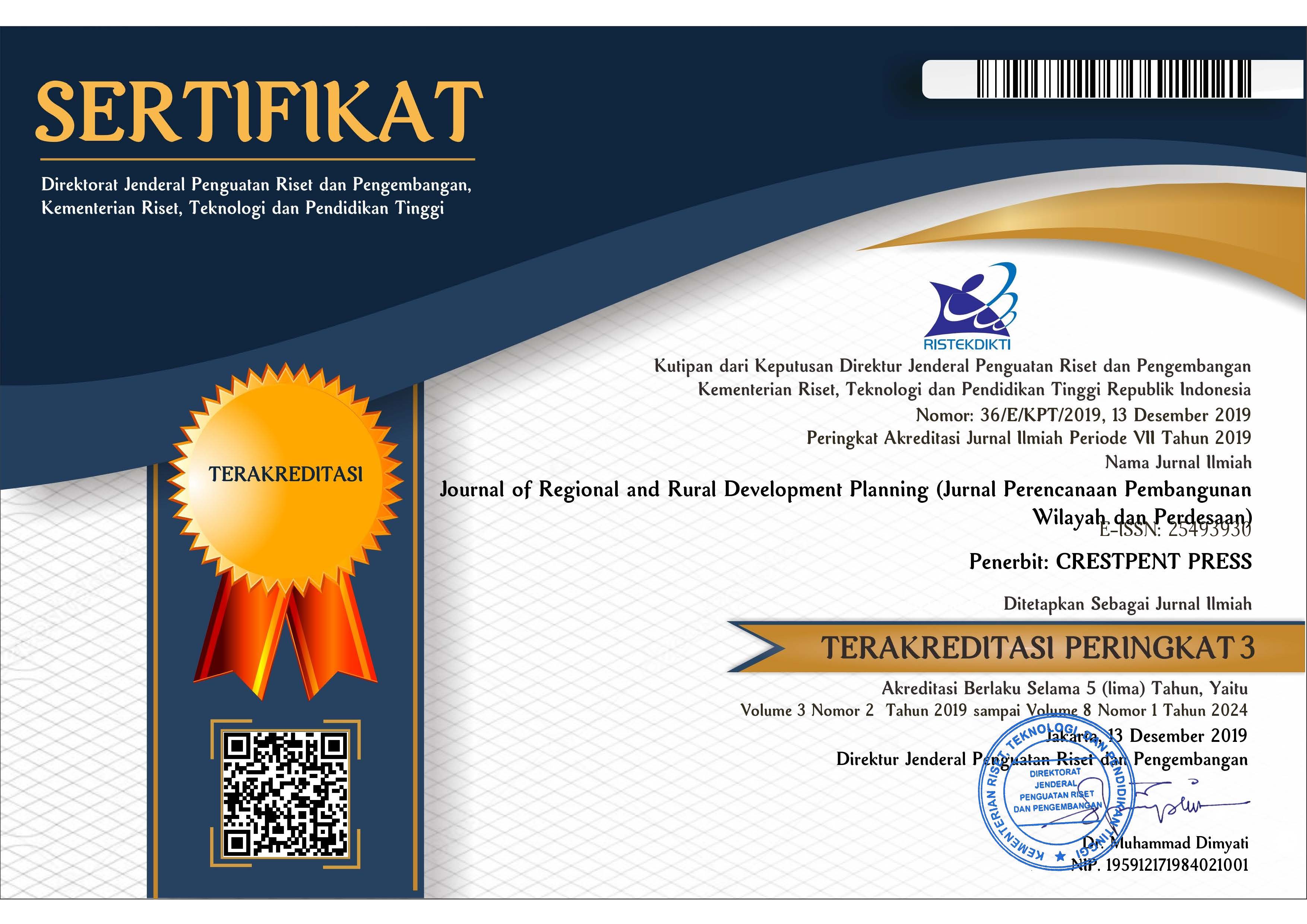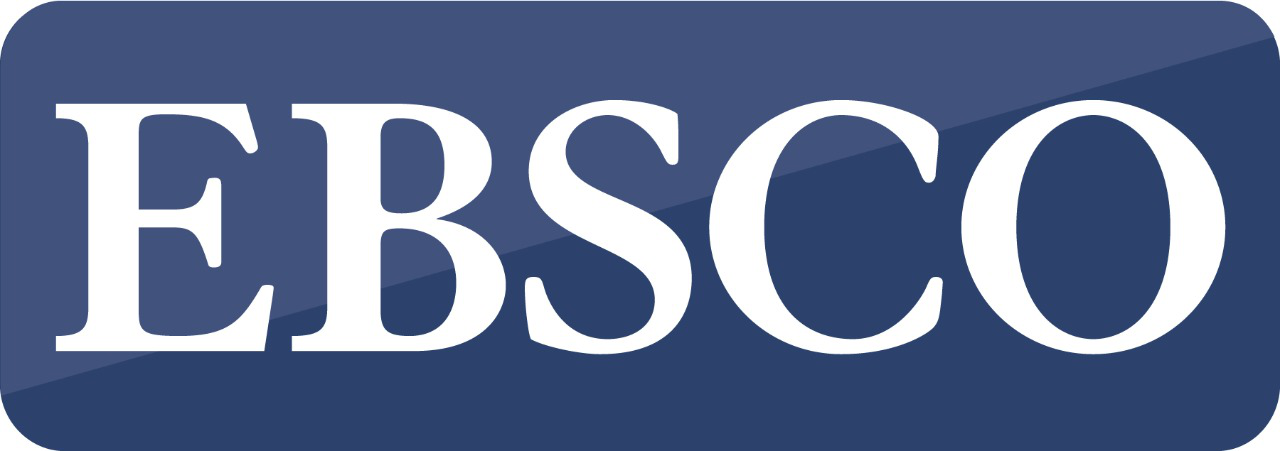Peranan Pemangku Kepentingan dalam Pengelolaan Berkelanjutan BUMDes Barokah Desa Tugu Utara, Kecamatan Cisarua, Kabupaten Bogor
Abstract
The Role of Stakeholders in Sustainable Management of BUMDes Barokah Tugu Utara Village, Cisarua District, Bogor Regency
The establishment of village-owned business entity (BUMDes) is a mandate of the Village Law as an effort to encourage or stimulate rural economy, as well as an effort to increase village income. The village of Tugu Utara has formed a BUMDes institution to utilize its very abundant spring water sources. Utilization of spring water resources, which is a common resource, must be managed properly and involve all stakeholders so that clean water sources could be maintained in a sustainable manner. This study aims to investigate the role and influence of each stakeholder, as well as patterns of interaction between them as an effort to improve the management of BUMDes in Tugu Utara Village. The method used is Mactor Analysis. Results of analysis show that the stakeholder with the highest influence is Perhutani, meanwhile the stakeholder with the highest dependency is the manager of BUMDes. Good interaction is given by the head of village, the manager of the BUMDes, and Save Puncak Consortium of IPB University. Negative responses are given by stakeholders from PT Lintas Daya Kreasi and PT Sumber Sari Bumi Pakuan. Collaborative planning is needed among stakeholders in order to build a shared understanding of spring water governance.
References
Abdullah, S. (2013). Potensi dan Kekuatan Modal Sosial dalam Suatu Komunitas. Jurnal Socius, 12, 15–21.
Ahmed, M. T., Saleh, M., Abdelkadir, A. F., & Abdelrahim, A. (2009). El Maghara Scenario a Search for Sustainability and Equity: an Egyptian Case Study. Journal of Futures Studies, 14 (2), 55–90.
Bendahan, S., Camponovo, G., Pigneur, Y. (2003). Multi-Issue Actor Analysis: Tool and Models for Assesing Technology Enviroment. Journal of Decision Systems, 12 (4), 1–31.
[BPS]. 2015. Kabupaten Bogor dalam Angka. Badan Pusat Statistik.
Cahyono, B. & Ardian, A. (2012). Peranan Modal Sosial dalam Peningkatan Kesejahteraan Masyarakat Petani Tembakau di Kabupaten Wonosobo. Jurnal Cbam-Fe Unissula, 1, 131–144.
Dewi, A. S. K. (2014). Peranan Badan Usaha Milik Desa (BUMDes) sebagai Upaya dalam Meningkatkan Pendapatan Asli Desa (PADes) serta Menumbuhkan Perekonomian Desa. Journal of Rural and Development, 5 (1), 1–14.
Fauzi, A. (2019). Teknik Analisis Keberlanjutan. PT Gramedia Pustaka Utama.
Hardjono, Astuti, N. D., Widiputranti, C. S. (2013). Model Pengelolaan Air Bersih Desa di Bantul Yogyakarta. Jurnal Komunitas Research & Learning in Sociology and Anthropology, 5 (2), 185–196.
Isa, M, Mangifera, L. (2017). Analisis Stakeholder dalam Pengurangan Risiko Banjir di Kabupaten Klaten. University Research Coloquium Universitas Muhammadiyah, 237–244.
Jocom, H., Kameo, D. D., Utami, I., & Kristijanto, A. I. (2016). Air dan Konflik: Studi Kasus Kabupaten Timor Tengah Selatan. Jurnal Ilmu Lingkungan, 14 (1), 51–61.
Kusumastuti, A. (2015). Modal Sosial Dan Mekanisme Adaptasi Masyarakat Pedesaan dalam Pengelolaan Pembangunan Infrastruktur. Jurnal Labsosio, 20 (1), 81–97.
Kushandajani. (2016(. Implikasi UU Nomor 6 tahun 2014 tentang Desa terhadap Penyelenggaraan Pemerintahan Desa. Jurnal Ilmiah Ilmu Pemerintahan, 2 (1), 53–64.
Rustiadi, E., Saefulhakim, S., & Panuju, D. R. (2011). Perencanaan dan Pengembangan Wilayah. Yayasan Obor Indonesia.
Santoso, R. (2017). Relasi Antar Kelembagaan Desa dalam Pembangunan Infrastruktur di Desa Mayang Pongkai Kecamatan Kampar Kiri Tengah Kabupaten Kampar. Jurnal Online Mahasiwa FISIP, 4 (2), 1–12.
Ulumiyah, I., Gani, A. J. A., & Mindarti, L. I. (2013). “Peran Pemerintah Desa dalam Memberdayakan Masyarakat Desa” (Studi pada Desa Sumberpasir Kecamatan Pakis Kabupaten Malang)”. Jurnal Administrasi Publik (JAP), 1 (5), 890–899.
Yuliani, Y. & Rahdriawan, M. (2015). Kinerja Pelayanan Air Bersih Berbasis Masyarakat di Kelurahan Tugurejo Kota Semarang. Jurnal Pengembangan Kota (JPK), 3 (1), 11–25.
Copyright (c) 2019 Journal of Regional and Rural Development Planning (Jurnal Perencanaan Pembangunan Wilayah dan Perdesaan)

This work is licensed under a Creative Commons Attribution-ShareAlike 4.0 International License.




.png)














